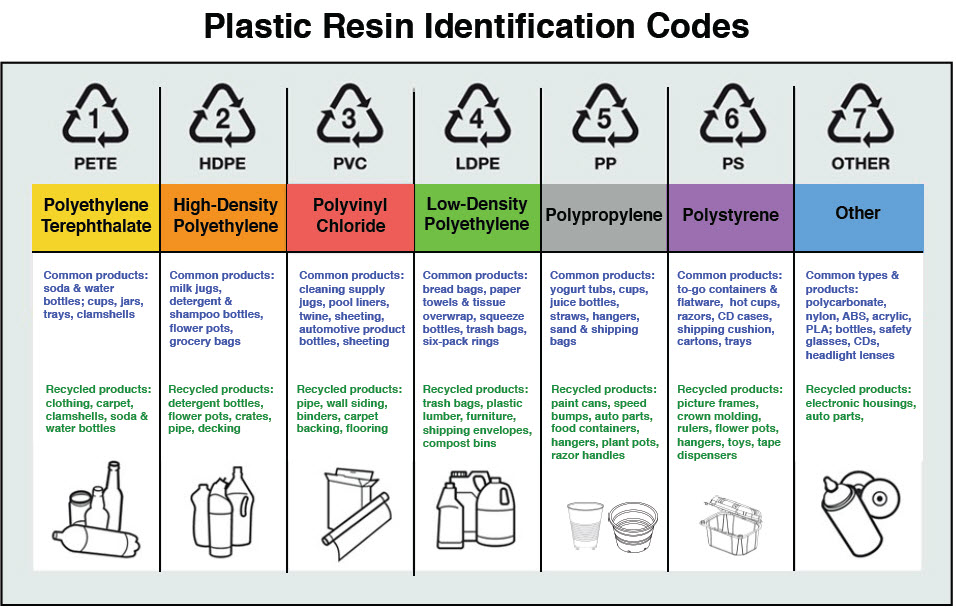Plastic Waste: The World's Most Pressing Environmental Issue
by: Grand Ho, Art 3170-02, Professor Aziz
What is plastic waste?
Plastic waste or
plastic pollution is accumulation in the environment of synthetic plastic products to the point where they create problems for wildlife and their habitats as well as for human populations. Plastic as a material is extremely versatile and durable making it ubiquitous. It's used in grocery bags, packaging, vehicles, medical supplies, clothing, etc. More than
380 million tonnes of plastic is produced every and over 8 billion tonnes of plastic has been produced to date.
What is the problem?
The problem is plastic is non-degradable and when broken down, turns into microplastics which are more harmful to the environment. Plastic can be recycled, but less than 10% of the plastics produced in the United States are recycled. Furthermore, out of the seven plastic recycling symbols seen on the bottom of plastic bottles and containers, only
PET #1 and HDPE #2 are truly recyclable in the U.S. Depending on where your live, things like plastic wrap, chip bags, and polystyrene foam are not being recycled when placed in the recycling bin. Unfortunately, the majority of plastic ends up in landfills where they accumulate or end up in the ocean.
Why is plastic in the ocean bad?
Marine life can get caught in plastic rings (from can drink holders), ingest plastics, and/or be exposed to plastic chemicals, all of which can lead to death. Sea turtles, for example, may mistake a plastic bag for a jellyfish and are commonly affected by plastic in the ocean. When plastics are broken down into microplastics, many fish ingest them and can end up being eaten with plastic in their bellies. So, much plastic ends up in the ocean that in the Pacific Ocean, a large patch of debris called the Great Pacific Garbage Patch holds approximately 80,000 tonnes of plastics and is 1.6 million square kilometers (or twice the size of Texas).
What is the solution?
Well changing the mentality of plastic should be the start. Since it's cheap and durable, it is too often used for single-use items such as grocery bags, straws, and water bottles. Switching to reusable items like bags, metal straws, and reusable bottles will eliminate plastic waste. The best way to eliminate single-use plastics would be if our government issued a ban on single-use plastics. Recycling should still be done, but it is not our fault that most of the plastics we want to recycle can't be recycled. The plastic-producing industry should be the ones held responsible for all the unrecyclable plastic waste. Therefore, an Extended Producer Responsibility or EPR law that requires plastic producers to create infrastructure to recycle all plastics they produce or force them to stop producing plastics needs to be enacted. By shifting the responsibility of recycling plastic to the plastic producers, more plastics will be recycled, and/or fewer plastics will be produced. In California, an
assembly bill on the EPR of plastics has already been introduced and an EPR might finally be voted on in 2021. If you want to learn more, I recommend watching
Last Week Tonight with John Oliver's episode on plastics, which is what inspired me to write about this topic. Ever since California banned single-use plastic bags, I've stopped to think what other plastics can be substituted for reusable items, but I always felt that no matter what I did, the amount of plastic waste I reduced would be insignificant to the amount produced. But I realize that reducing plastic waste shouldn't be my responsibility, but the plastic producers who generate more than I do. I shouldn't blame my local government for being unable to recycle certain plastics since it's the plastic product manufacturers' fault for producing products that can't be recycled. I am hopeful that an EPR law on plastics gets passed this year and I can contact my state's representative to inform them about this issue.
References:
Geyer, Roland, et al. “Production, Use, and Fate of All Plastics Ever Made.” Science Advances, vol. 3, no. 7, 19 July 2017, doi:10.1126/sciadv.1700782.
“The Great Pacific Garbage Patch.” The Ocean Cleanup, 11 Feb. 2020, theoceancleanup.com/great-pacific-garbage-patch/#:~:text=The%20GPGP%20covers%20an%20estimated,times%20the%20size%20of%20France.&text=To%20formulate%20this%20number%2C%20the,elaborate%20sampling%20method%20ever%20coordinated.
Hocevar, John. “Circular Claims Fall Flat: Comprehensive U.S. Survey of Plastics Recyclability.” Greenpeace, 18 Feb. 2020.
LastWeekTonight. Plastics: Last Week Tonight with John Oliver (HBO). YouTube, YouTube, 21 Mar. 2021, www.youtube.com/watch?v=Fiu9GSOmt8E.
“Plastic Pollution.” Encyclopædia Britannica, Encyclopædia Britannica, Inc., www.britannica.com/science/plastic-pollution.
“Plastic Waste and Pollution [Everything You Need To Know In 2020].” Commercial Waste, City of Westminster, 8 Jan. 2021, cleanstreets.westminster.gov.uk/plastic-waste-complete-guide/#6.
“Plastics: Material-Specific Data.” EPA, Environmental Protection Agency, 5 Jan. 2021, www.epa.gov/facts-and-figures-about-materials-waste-and-recycling/plastics-material-specific-data.
Ritchie, Hannah, and Max Roser. “Plastic Pollution.” Our World in Data, 1 Sept. 2018, ourworldindata.org/plastic-pollution#:~:text=The%20world%20now%20produces%20more,our%20natural%20environment%20and%20oceans.




No comments:
Post a Comment